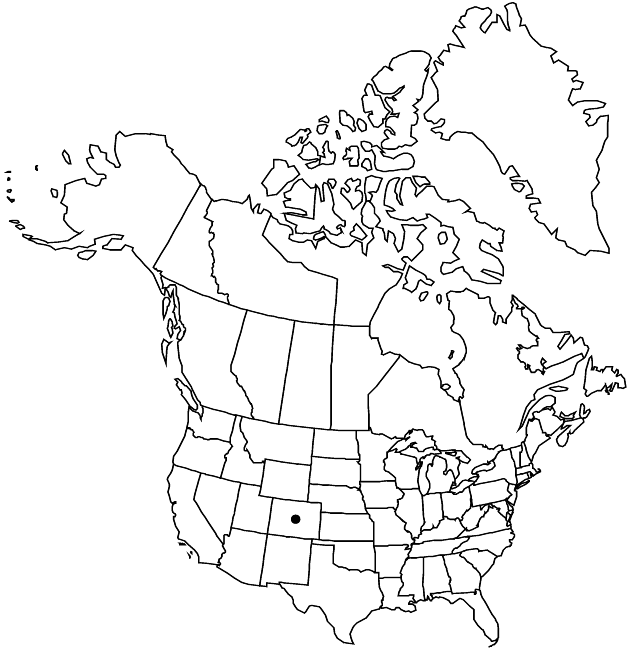Townsendia glabella
Proc. Amer. Acad. Arts 16: 86. 1881.
Perennials, 1–5 cm (± pulvinate). Stems ± erect; internodes 0.1–1 mm, strigose. Leaves basal and cauline, blades spatulate to oblanceolate, 20–60+ × 2–5(–11+) mm, little, if at all, fleshy (margins strigoso-ciliate), usually glabrous, sometimes sparsely strigillose. Heads usually on scapiform peduncles 10–20(–70) mm, rarely sessile. Involucres hemispheric or broader, 8–12(–24) mm diam. Phyllaries 20–28+ in 3–4+ series, the longer ± lanceolate, 5–9 mm (l/w = 3–5), apices acute, abaxial faces glabrous or sparsely strigillose. Ray florets 12–34+; corollas usually white, sometimes pink or blue adaxially, laminae 5–10(–14+) mm, glabrous abaxially. Disc florets 50–80+; corollas 3.5–5.5 mm. Cypselae 2–4 mm, faces sparsely hairy (mostly at bases), hair tips glochidiform; pappi persistent; on ray cypselae ± 20 lanceolate to subulate scales 0.5–1.8 mm; on disc cypselae 15–35 subulate to setiform scales (4–)5–7 mm. 2n = 18.
Phenology: Flowering May–Aug.
Habitat: Shale slopes with pines
Elevation: 2100–2600 m
Discussion
Of conservation concern.
Distinctions between Townsendia glabella and T. rothrockii are subtle. Types of the two names are probably better considered to be conspecific.
Selected References
None.
